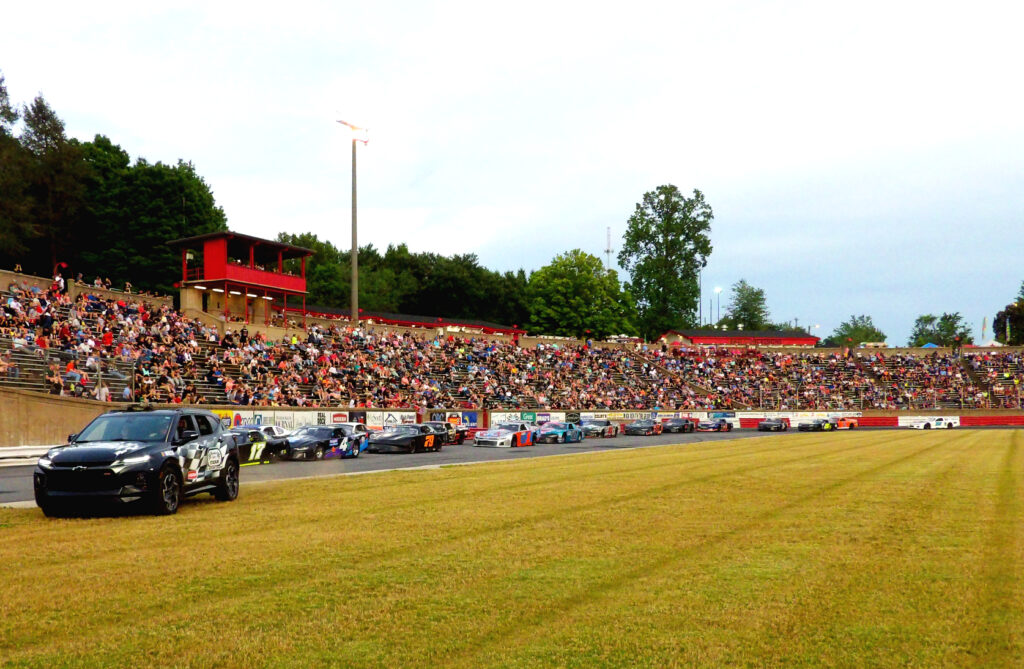
“This place is a joke. A real circus. Not a real race track, only a place to get revenge. Why go there?”
Anonymous Actual Facebook Commenter
Most of you know that during the week, we put out an event poster intended to announce our extended coverage choice for the upcoming weekend. Last week we put out the poster announcing that Short Track Report would be making our first coverage trip to Bowman Gray Stadium. And as we usually do, we shared it on social media, and to the best short track racing oriented Facebook groups we have chosen to add our content to. To the groups in particular that we feel best support short track racing. Almost immediately we got a comment in the Northeast Asphalt Modified group that caught our attention. It said, “This place is a joke. A real circus. Not a real track, only a place to get revenge. Why go there?” You might be surprised but we feel it was a legitimate question that deserves an equally legitimate answer. So this week’s Short Track Report extended coverage article is going to be a bit different as we are going to answer the poster’s question. Yes, there are many others that could answer it. But we feel we have as unique a perspective on it as anyone.
A lot of people know by now that me and Josh grew our love for the sport at The Stadium. Me when I was around six years old as I could hear the echoes of the place ringing off the city of Winston-Salem, North Carolina and the sounds drifted into the neighborhood some miles away. The roar of the crowd and the sounds of those machines as they muscled around the legendary quarter mile led me to want to know more about what was happening there. Particularly since in broken intervals, the cheers were louder than the thunder of the cars. 39 years later I took Josh over there too. He was much younger than me, but he took to it like I did. Truly, it was more than love as now, all these years later, racing has become life to us. And now, in many ways, it’s all come full circle as we prepared to make our first visit to “The Madhouse” as the owners of Short Track Report, to give our followers and the fans of short track stock car racing a different in depth look at racing at Bowman Gray Stadium. In the end we want to touch on it’s relevancy, or lack thereof. Before we get to that however, let’s take a closer look at the event we chose to cover, the Elite Underground Utility 100.
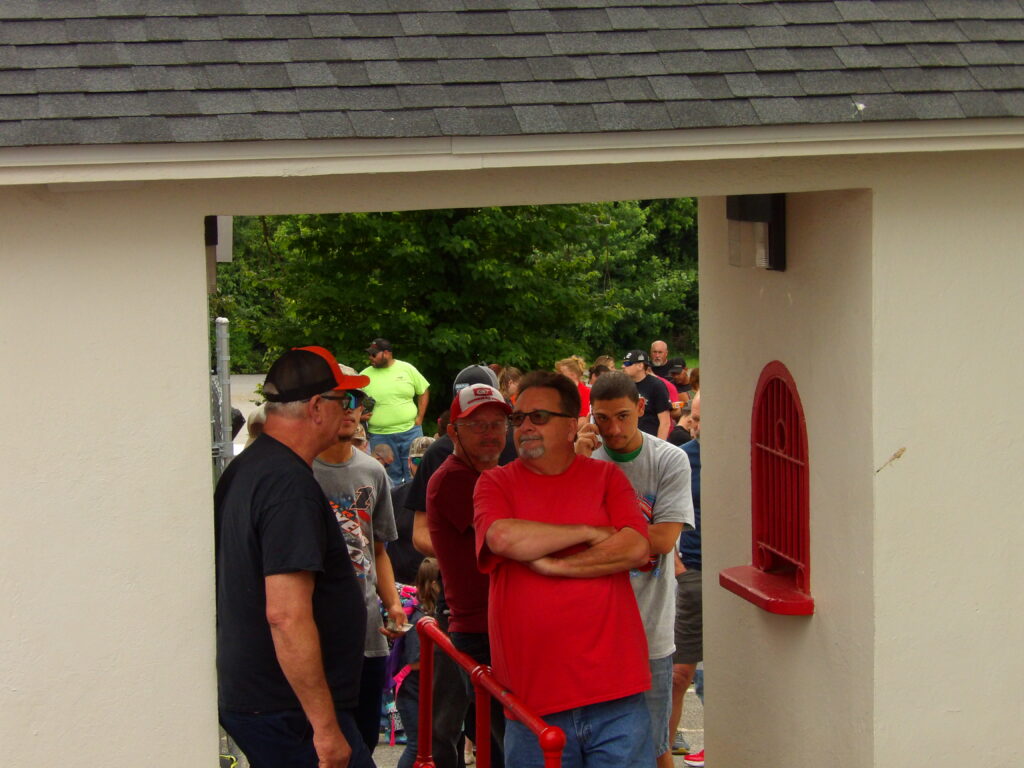
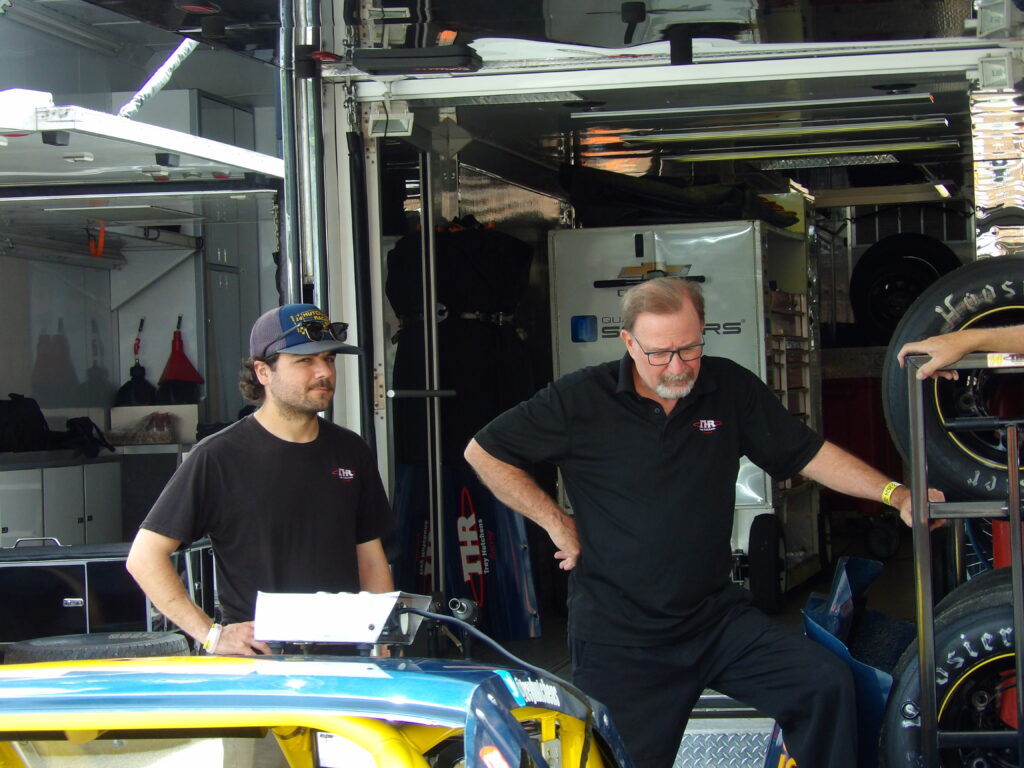
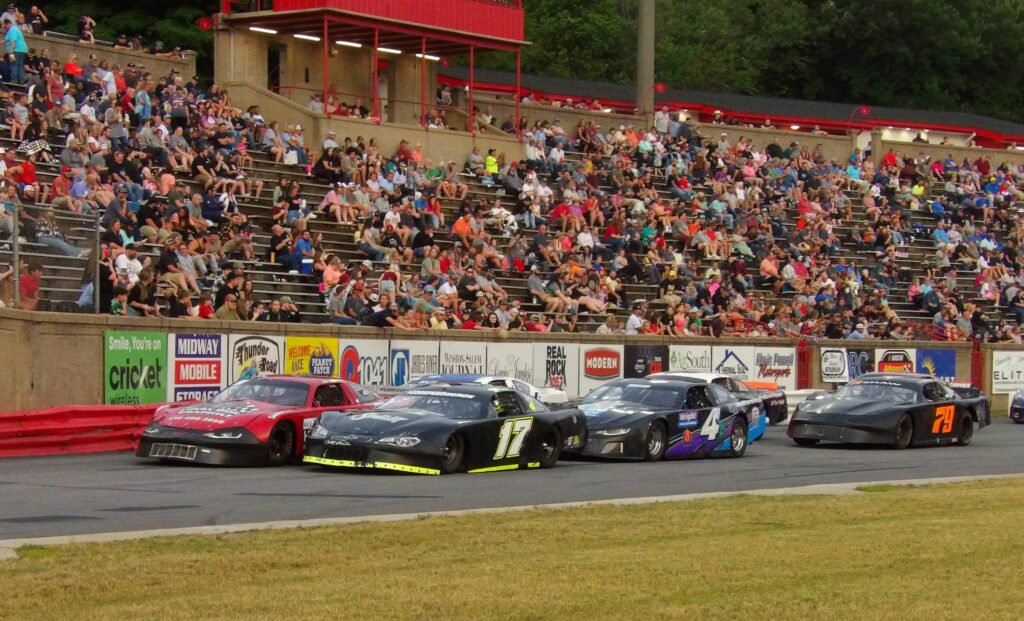
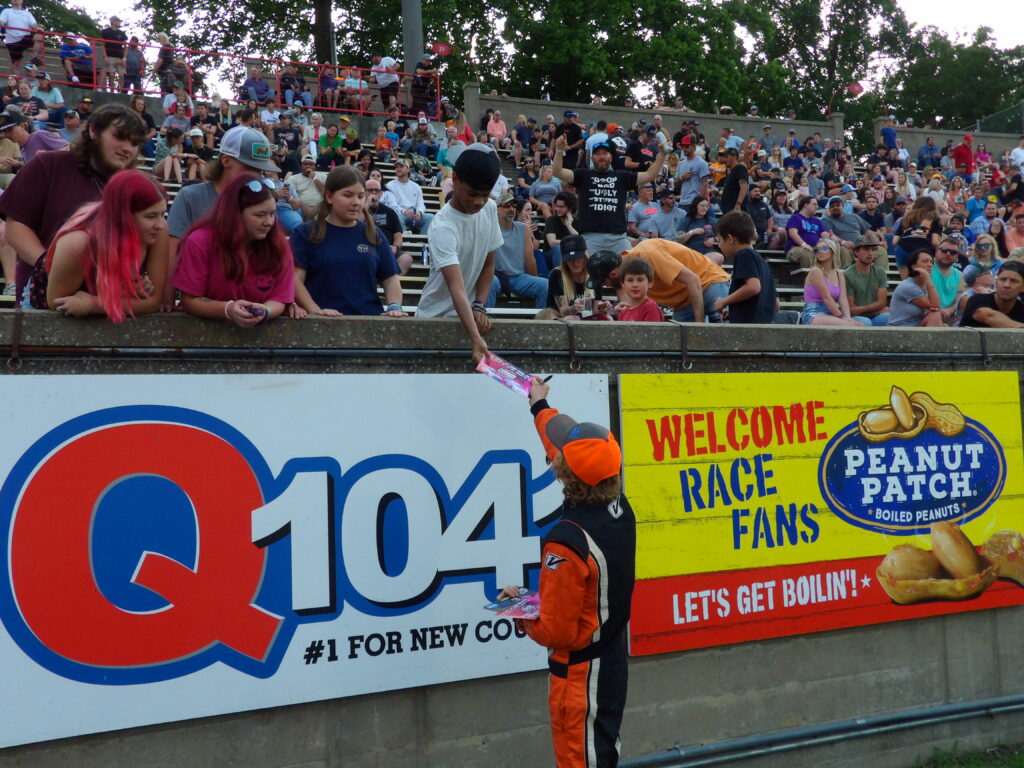
Q104.1 STADIUM STOCK FEATURE
Bowman Gray legend A.J. Sanders in the # 24 will start on the pole with Ricky Wall in the # 26 starting alongside. Sanders gets a huge launch off the green as the huge field scrambles behind, with multiple cars getting out of shape. The trouble allows former Stadium Stock champion Chuck Wall in the # 81 to knife through the field and challenge Sanders. But Wall gets contact from Brad Mickalowski in the # 60, sending Wall around and collecting the # 27 of Austin Cates, taking Wall out of the race in heartbreaking fashion. Sanders receives one last challenge from the # 1 of Grayson Keaton, but it’s not enough as Sanders collects yet another Bowman Gray trophy.
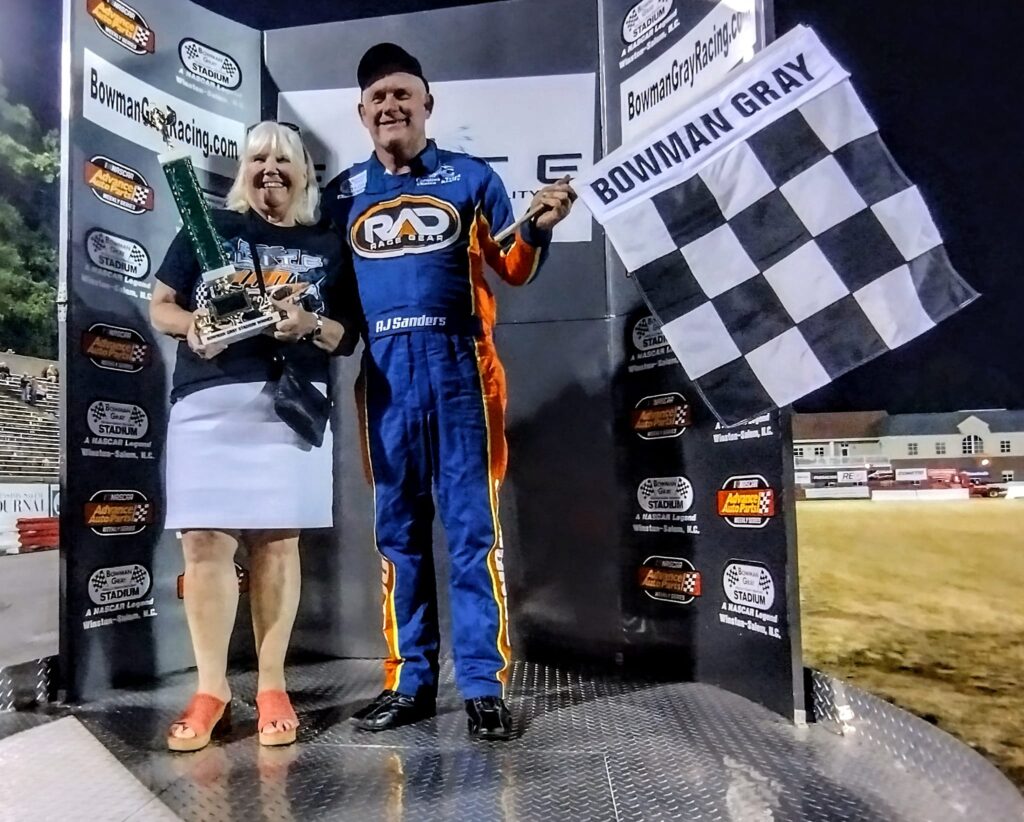
QRC HVAC & REFRIGERATION STREET STOCK FEATURE
The # 17 of Andy Southern will lead the Street Stock field to green with the # 12 of Nick Wall to his outside. It doesn’t take long for Wall to assume the top spot as Southern falls victim to the fast # 1 machine of points leader Christian Joyce. Joyce stalks Wall and before you know it, he’s right on his back bumper. Joyce makes contact with him in turn four, sending Wall around. That leaves the door open for Southern, but Southern doesn’t have enough as Joyce cruises to victory lane. After the race, Wall comes up alongside and voices his displeasure, a storyline to definitely watch for the remainder of the season.
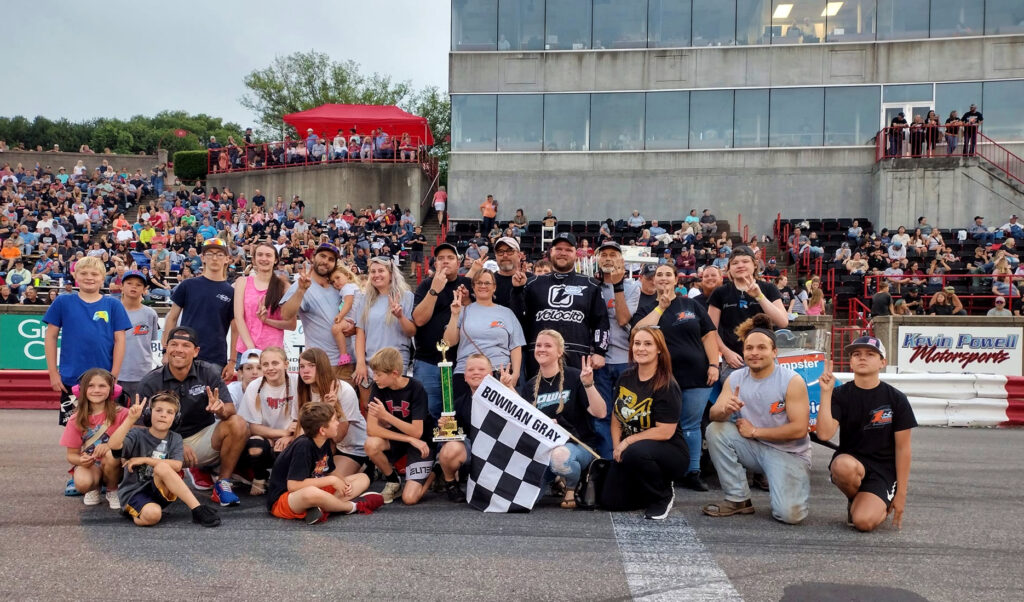
LAW OFFICES OF JOHN BARROW SPORTSMAN FEATURE 1
The always exciting Bowman Gray Sportsman division hits the track with Sterling Plemmons in the # 03 looking for his second career win on the pole and T. Dawson in the # 15 in second who looks for his first. Dawson doesn’t get the start he’s looking for, making a way for “Tiger” Tommy Neal in the # 21 to take second. Neal gives Plemmons’ bumper a workout, but Plemmons does an excellent job of blocking every advance. It can only last so long though, as the two finally come together with Plemmons spinning. Neal gets caught up in the calamity, making way for Zack Ore in the # 55 to take the lead. Ore fends off Zack Clifton in the # 81 for the improbable win, later drawing # 12 in the Madhouse Scramble, meaning he’ll start twelfth in the second feature while the twelfth place finisher will start up front.

LAW OFFICES OF JOHN BARROW SPORTSMAN FEATURE TWO
A big opportunity presents itself for Chase Lewis in the # 11 as he’ll start first for race two while Plemmons looks to redeem himself in second. Plemmons takes the hard task of passing on the outside and makes it look easy, taking the lead as the pack behind sort themselves out. Lewis soon goes wildly through the grass, taking him out of contention for the win. Plemmons will have his work cut out for him as a hungry Braden Mills in the # 54 is right behind followed by the defending champion of Chase Robertson in the # 31. Plemmons stays calm under pressure and avenges his earlier loss, taking home win # 2 in the Sportsman class.
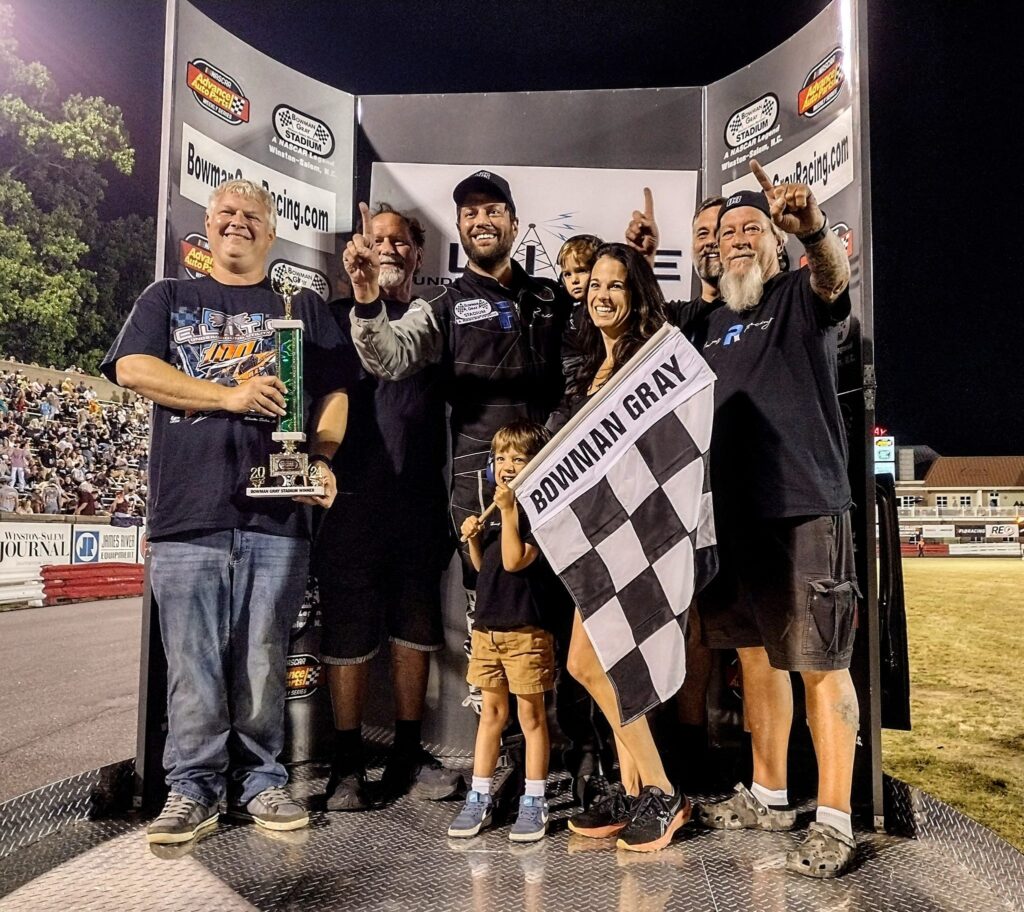
ELITE UNDERGROUND UTILITY 100 MODIFIED FEATURE
The # 1 of Burt Myers lays down the fastest qualifying lap and has the chance along with the # 83 of Tim Brown, the # 4 of Jason Myers, and the # 75 of Lee Jeffreys to take the unique Fans’ Challenge. The Fans’ Challenge gives the top four qualifiers the opportunity to willingly go to the rear for a chance at $3,000. If you make it back to the top four, the money is yours. The catch is the rest of the field will redraw, meaning if you say no, you still could draw towards the back of the field. Jeffreys is the only one who accepts the challenge. After the redraw, your top five will be Trey Hutchens in the throwback # 14, Brian Loftin in the # 23, “The Rocket” Tim Brown, Kyle Southern in the # 9, and the # 6 of Slate Myers. Loftin and Brown make their way past Hutchens early, with Hutchens trying his best to stay in the top three. His efforts will unfortunately be foiled as contact from Southern sends him around early. Taking advantage of the choose cone, Brown and the # 57 of Danny Bohn soon rise to the top. Multiple cautions take their course, giving Bohn opportunity after opportunity to get around Brown, but to no avail. On a pivotal late race restart, Bohn somehow finally makes it work, passing one of Bowman Gray’s greatest on the outside. It isn’t over yet though as here comes Burt Myers, whose car has come to life late in the going. He forges ahead of Brown and is all over the back bumper of Bohn, giving him multiple shots. But when the checkered flag waves, it’s Danny Bohn taking the huge victory over Burt Myers, Chris Fleming in the # 16, Jason Myers, and Brown who falls to fifth. Jeffreys will sadly fall short of the Fans’ Challenge, finishing ninth, making the next Fans’ Challenge pool $6,000.
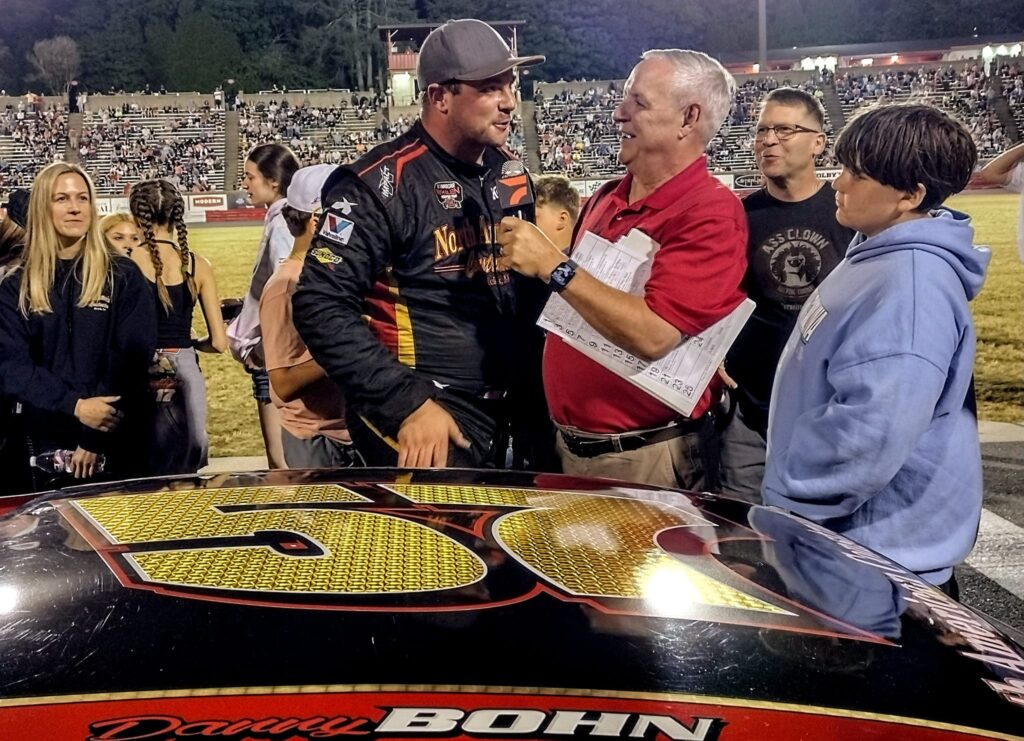
MY TAKE
First off, Danny Bohn in the last two 100 lap Modified features has done two of the hardest things you can do at Bowman Gray Stadium. Running a limited schedule this year, the 2014 Bowman Gray Stadium Modified Champion in the previous 100 lap feature took the Fans’ Challenge. It’s a tough challenge to say the least at Bowman Gray, but Bohn achieved it. And this Saturday night, he did what many say can’t be done here. Not only did he take another impressive Modified win at The Stadium, but he did it from the outside. Both of those feats are rarities for sure, but not impossibilities. But they prove one other thing that many from the outside of The Stadium say doesn’t happen, and that’s great RACING at the legendary quarter mile. Having been a fan of Bowman Gray Stadium most of my life, I knew they were wrong. I heard Freddie Kraft on the popular podcast Door Bumper Clear say that you don’t see or hear about photo finishes at Bowman Gray Stadium. I can personally tell you he’s wrong about that. I’ve seen it and it’s one of the most exciting things you can see in motorsports. While I have tremendous respect to Kraft and everyone there at Door Bumper Clear, he’s just dead wrong on that. But, that said, let’s for a moment take out the racing, the crowd, the antics, and everything you hear negative about Bowman Gray racing as we answer the question about The Stadium’s relevancy.
I’m going to make a statement here that some may find a bit shocking for us to make, but hear me out. Bowman Gray Stadium is the most important short track in the world. Period. How can I say that you say? Because when it comes to asphalt tracks big and small, Bowman Gray Stadium is the first NASCAR sanctioned asphalt track. In essence, there may not have been Daytona, Talladega, or any super speedway if Bowman Gray Stadium had not been successful. Yes, “Big” Bill France had a dream, and it was as big as his moniker. But that dream started in essence right here on the quarter mile in Winston-Salem. And it truly was fate for the entire stock car racing world. Automobile racing first came to The Stadium in 1939 with Midget style race cars from the era. They raced around the football field, built as a depression era project for the city. And they competed here until around 1949. The track was paved in 1947 as a promoter convinced the city of Winston-Salem to do so in a deal that was supposed to get the city paid back through racing revenue. They were duped however as the promotor disappeared before any payments were made. But for Bill France and his partner Alvin Hawkins, it was a godsend moment. Stock car racing needed sanctioning as racers raced at dirt tracks, getting paid at the end of the night through a car window by a guy with a rifle on his lap in case things got testy. And sometimes they did as rarely were the purses paid out as promised, and the racing on the track at times was, for lack of a better word, outlaw. But, if France and Hawkins were going to convince the best drivers to race under their new organization and it’s sanction rules, they had to show those drivers that it would be all they said it would. And they needed a track to prove it.
They also needed to prove to any sponsor or investor that their dream of turning drivers competing on the dirt tracks in the fields in the south in “outlaw” style into competitors in a valid sport that could draw millions of fans and therefore millions of dollars was a dream that could and would come into fruition. It worked. Initially a 10,000 seat arena, Bowman Gray Stadium’s seating capacity was expanded to 17,000 to accommodate all the fans that flocked to the track to see all the action. Ironic then that Tim Flock won the first Modified championship in 1949, the first full NASCAR weekly racing season ever, on the first NASCAR asphalt competition track. And to this day, during the racing season, the track needs every bit of that 17,000 seating capacity as on most Saturday nights, it truly is standing room only. And from the outside, you may not realize it, but every asphalt stock car short track in the nation owes it’s existence to Bowman Gray Stadium. That answers the relevancy question.
As far as the racing goes, whether you quite believe it or not, it’s still one of the toughest places to win at with one of, if not the best, winners list of any short track in existence. Historical doesn’t quite cover it. Richard Petty won his 100th race here, but that’s just one of the great historical facts about the place. You need another article dedicated to just that to begin to cover it all. But I will close with this to those that question if racing at the stadium is real racing. Remember, stock car racing in America truly began as a bet to who was the best driver among moonshiners and World War II veterans who needed the adrenaline rush to deal with all they dealt with in the war. They were nothing short of daredevils. Safety was not really much of a consideration. Fear was a tactic, and the motto of “how bad do you want it” was tested to the fullest. And the truth is that fans came to see them race out of the knowledge of what could happen. It’s the same kind of thing that brings people to Talladega today. It was a spectacle. And as those drivers migrated to NASCAR to run asphalt races, that “style” of racing came with them. It’s to be considered that Bowman Gray Stadium’s first Modified Champion, who went on to win two Cup Championships in 1952 and 1955, used to race in the then Grand National Series for a time with a monkey named Jocko Flocko in the car with him. Now of course NASCAR achieved Bill France and Alvin Hawkins’ dream for stock car racing, and it’s the professional “refined” sport you see today. But to act like you don’t know or remember how or where it all started is selling the sport short. We’ve said it before and we’ll say it until we’ve fully made the point – If you forget where you started, you’ll lose where you’re going. All that said however, we’ll continue to cover the best racing events in the region as we’re able and that we’ve built our foundation upon. But we’re excited to add Bowman Gray Stadium to our coverage list. And it was an honor to tip our hats to where it all began, not just for us as fans, but for the sport of short track racing itself. Until next time, as always, See You At The Track!

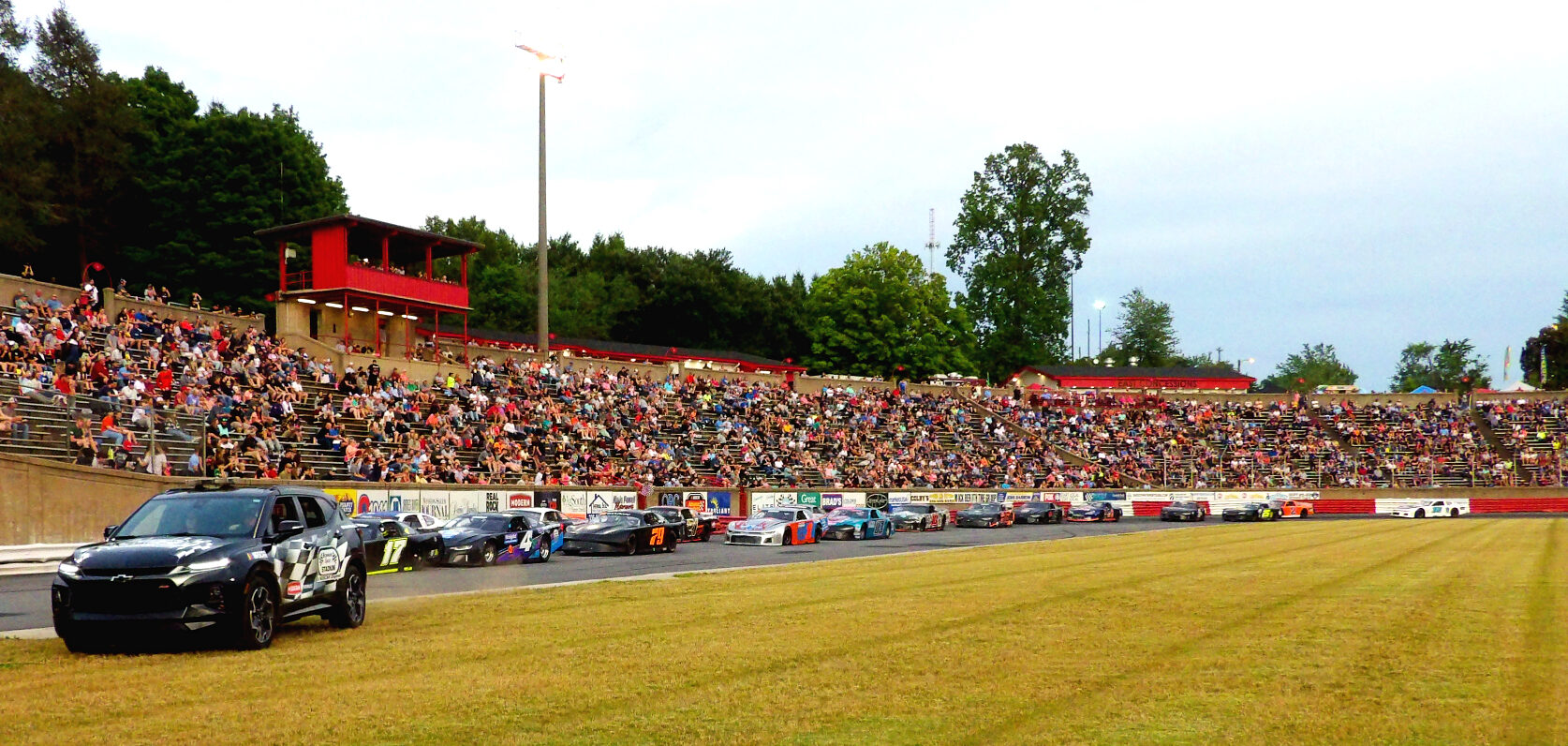


Leave a Reply